Refine listing
Actions for selected content:
17000 results
Preface
-
- Book:
- An Introduction to Radio Astronomy
- Published online:
- 28 May 2018
- Print publication:
- 17 September 2009, pp xi-xii
-
- Chapter
- Export citation
3 - Signals, noise, radiometers and spectrometers
-
- Book:
- An Introduction to Radio Astronomy
- Published online:
- 28 May 2018
- Print publication:
- 17 September 2009, pp 24-43
-
- Chapter
- Export citation
13 - Radio galaxies and quasars
-
- Book:
- An Introduction to Radio Astronomy
- Published online:
- 28 May 2018
- Print publication:
- 17 September 2009, pp 287-316
-
- Chapter
- Export citation
Contents
-
- Book:
- An Introduction to Radio Astronomy
- Published online:
- 28 May 2018
- Print publication:
- 17 September 2009, pp v-x
-
- Chapter
- Export citation
Frontmatter
-
- Book:
- An Introduction to Radio Astronomy
- Published online:
- 28 May 2018
- Print publication:
- 17 September 2009, pp i-iv
-
- Chapter
- Export citation
Appendix 1 - Fourier transforms
-
- Book:
- An Introduction to Radio Astronomy
- Published online:
- 28 May 2018
- Print publication:
- 17 September 2009, pp 397-404
-
- Chapter
- Export citation
7 - Radiation, propagation and absorption of radio waves
-
- Book:
- An Introduction to Radio Astronomy
- Published online:
- 28 May 2018
- Print publication:
- 17 September 2009, pp 124-147
-
- Chapter
- Export citation
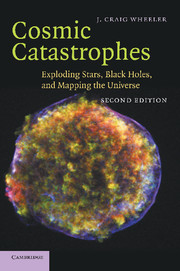
Cosmic Catastrophes
- Exploding Stars, Black Holes, and Mapping the Universe
-
- Published online:
- 14 September 2009
- Print publication:
- 04 January 2007
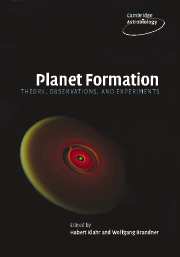
Planet Formation
- Theory, Observations, and Experiments
-
- Published online:
- 14 September 2009
- Print publication:
- 08 June 2006
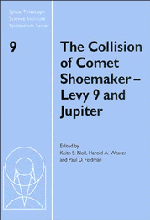
The Collision of Comet Shoemaker-Levy 9 and Jupiter
- IAU Colloquium 156
-
- Published online:
- 12 September 2009
- Print publication:
- 26 July 1996
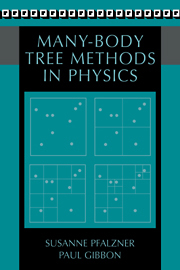
Many-Body Tree Methods in Physics
-
- Published online:
- 11 September 2009
- Print publication:
- 13 October 1996
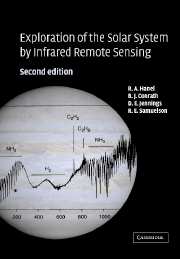
Exploration of the Solar System by Infrared Remote Sensing
-
- Published online:
- 07 September 2009
- Print publication:
- 06 March 2003
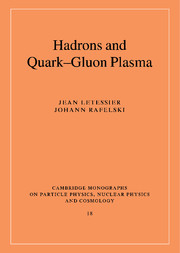
Hadrons and Quark–Gluon Plasma
-
- Published online:
- 05 September 2009
- Print publication:
- 30 May 2002
-
- Book
- Export citation

The Evolution of Matter
- From the Big Bang to the Present Day
-
- Published online:
- 04 September 2009
- Print publication:
- 12 June 2008
1 - Astrobiology in a societal context
-
-
- Book:
- Exploring the Origin, Extent, and Future of Life
- Published online:
- 29 December 2010
- Print publication:
- 03 September 2009, pp 1-18
-
- Chapter
- Export citation
Index
-
- Book:
- Exploring the Origin, Extent, and Future of Life
- Published online:
- 29 December 2010
- Print publication:
- 03 September 2009, pp 321-324
-
- Chapter
- Export citation
Part III - Future of life
-
- Book:
- Exploring the Origin, Extent, and Future of Life
- Published online:
- 29 December 2010
- Print publication:
- 03 September 2009, pp 243-244
-
- Chapter
- Export citation
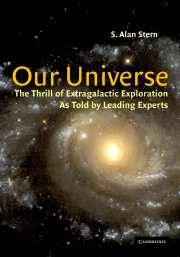
Our Universe
- The Thrill of Extragalactic Exploration
-
- Published online:
- 03 September 2009
- Print publication:
- 08 March 2001
6 - The alpha and the omega: reflections on the origin and future of life from the perspective of Christian theology and ethics
- from Part I - Origin of life
-
-
- Book:
- Exploring the Origin, Extent, and Future of Life
- Published online:
- 29 December 2010
- Print publication:
- 03 September 2009, pp 96-112
-
- Chapter
- Export citation
11 - The implications of discovering extraterrestrial life: different searches, different issues
- from Part II - Extent of life
-
-
- Book:
- Exploring the Origin, Extent, and Future of Life
- Published online:
- 29 December 2010
- Print publication:
- 03 September 2009, pp 205-219
-
- Chapter
- Export citation
